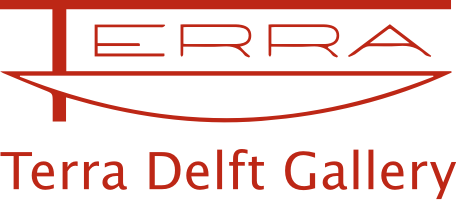Her sculptures are based on the mythical animals that play a role in the Mabinogion, the most important mediaeval literature of Wales, where she grew up on a farm.Yet these animals are not simply an illustration of the stories.Their sober colours and expressive stances represent a collective image, stored in the memory of anyone who has ever read fairytales, legends and myths.They are creatures which appeal to the imagination and evoke associations with dark forests. She shapes her pieces by hand, giving each creature its own unique character.
From New Ceramics/Neue Keramik issue 6/2012 (Judy Dames) “I enjoy the vulnerable quality of clay” says Catrin Howell. She appreciates her material’s fragility as she pinches and thins it out, not just the possibility of the impermanence of a form through the clay’s collapse but its capacity to mutate. What starts of as a cat’s head can be transformed into a bat’s. “Tentative possibilities appeal more than certainties”, she claims, “pencil drawing attracts me because it is erasable”. A preference for the transient pervades her work. The heads she makes are very finely hollowed; the merest shell of a skull, as if the skin alone could keep its shape. The eye sockets are empty but the emptiness is black, radiating a frightening energy, a secret presence. She recalls visiting Tring Natural History Museum and opening a series of drawers, to find each contained, row upon row, the bodies of numerous rooks and ravens, just the skin and feather. Catrin Howell was born and brought up in a remote area of west Wales, near the Teifi valley, on her father’s farm, which has been in the family for eight generations. The studio she uses there has been converted from an old, but splendid, pigsty. In all early photographs of her as a child she is shown holding, or accompanied by an animal. Having been surrounded by them for so long, she says, it is natural that they play a significant role in her work.

